Dry Versus Liquid Measuring Cups and a Scale Maybe You Can't Live Without?
I’ll admit it, I’ve been a hurried and sometimes (OK, lots of times) careless cook and baker. As an example, I often measure flour, liquids, and most other ingredients in the same glass Pyrex measuring cup. Why not? This saves washing all those assorted sized measuring cups. Doesn’t everyone do this?
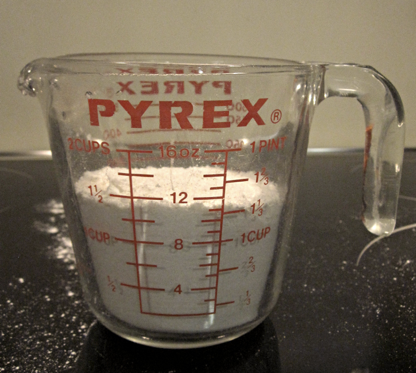
Well, no they don’t. And here’s why: Liquid measuring cups (aka Pyrex with red measurement markings) and dry measuring cups (assorted sized metal or plastic cups) measure differently. You can test this yourself using 1 cup of all-purpose flour, measuring in both the liquid measuring cup and the dry measuring cup.
You’ll find you’re more accurate with the dry measuring cup because you can level the flour off evenly. It’s impossible to level a cup of flour in a liquid measuring cup, and you’ll be off measurement by almost 26%. That’s a lot of extra flour in a recipe.
You can also test this by measuring water in both measuring cups. The dry cup can be off measurement by as much as 23% because it’s so easy to overfill it (due to surface tension that allows the liquid to sit slightly higher in this type of vessel). And that’s a lot of extra liquid in a recipe. It’s much easier to gauge the volume of water in the liquid measuring cup, as its transparency allows you to see when the liquid has touched the 1-cup line.
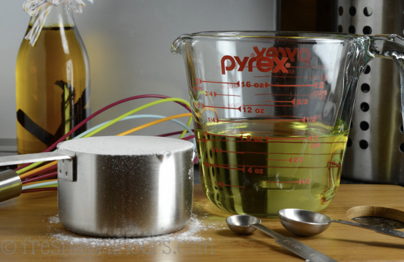
Now that we know the best tool for the ingredient being measured, what’s the best way to actually do the measuring? When measuring a dry ingredient, the pros say to scoop it up (flour, for instance) with the dry measuring cup and then sweep off the excess with a flat utensil—it’s the “dip and sweep” technique.
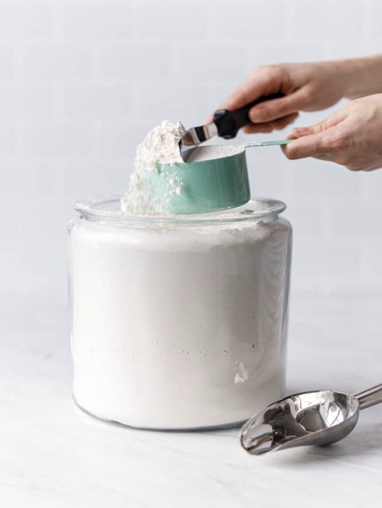
When measuring liquids, place the liquid measuring cup on the counter and bend down so the measurement markings are at your eye level. Then pour the liquid in until it reaches the desired marking.
But if you’re a cooking and baking purist, then you’ll follow the advice of professional chefs. Every one of them insiste that for 100% accuracy we should use a scale.
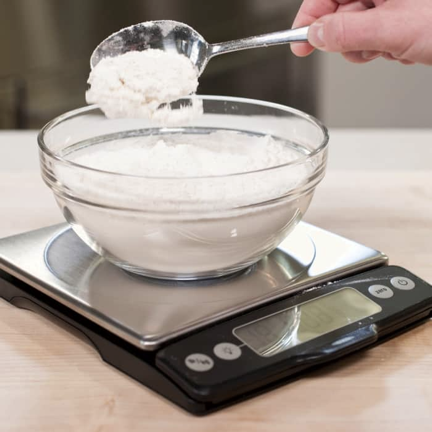
I’ve never used a scale when cooking/baking. Have you? I was curious to know more about them, their cost, etc. So I did some research. Lots of sites out there have lots of opinions. First of all, they’re all pretty much digital today. And the best have a tare function. A tare function subtracts the weight of a container so you are only measuring the contents. To use this feature, you simply place the empty container on the scale, press the tare button to reset the sale to zero, then add your items to be weighed.
Second of all, I noticed a consistency showing up on brands and models the pros recommended. After pouring through lists and lists, the scale that showed up at the top the most was the Ozeri ZK14-S Pronto Digital Food Scale.
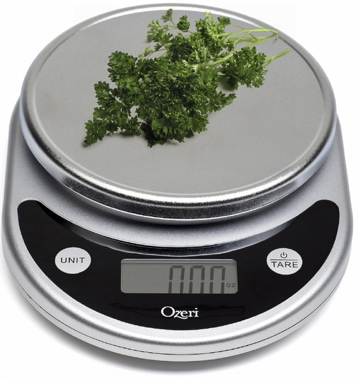
This scale features an enlarged weighing platform to accommodate larger bowls and food items. (So many of the scales were a little shy in that area.) This scale has unit button that let you quickly change the unit of measurement, and has five different units to choose from (g, lbs, lbs:oz, oz, ml). It has an LCD display that provides a wide viewing angle and features that above-mentioned tare button. All the pros that recommended this scale also loved how it can weigh up to 11.24 pounds (5100 grams) in graduations of just 0.05 ounces (1 gram). It takes 2 AAA batteries which are included with purchase. And lastly, the Ozeri has a 2-minute automatic power-off to preserve battery life. And the price is right ($9.75 on amazon.com).
But while all this sounds really alluring, to be honest, I’m still thinking “Nah, that’s over the top for this hurried cook.” Less careless I can be, but slowing down enough to use a scale? Probably not gonna happen. How about you, is this something maybe you can’t live without?

Well, no they don’t. And here’s why: Liquid measuring cups (aka Pyrex with red measurement markings) and dry measuring cups (assorted sized metal or plastic cups) measure differently. You can test this yourself using 1 cup of all-purpose flour, measuring in both the liquid measuring cup and the dry measuring cup.
You’ll find you’re more accurate with the dry measuring cup because you can level the flour off evenly. It’s impossible to level a cup of flour in a liquid measuring cup, and you’ll be off measurement by almost 26%. That’s a lot of extra flour in a recipe.
You can also test this by measuring water in both measuring cups. The dry cup can be off measurement by as much as 23% because it’s so easy to overfill it (due to surface tension that allows the liquid to sit slightly higher in this type of vessel). And that’s a lot of extra liquid in a recipe. It’s much easier to gauge the volume of water in the liquid measuring cup, as its transparency allows you to see when the liquid has touched the 1-cup line.

Now that we know the best tool for the ingredient being measured, what’s the best way to actually do the measuring? When measuring a dry ingredient, the pros say to scoop it up (flour, for instance) with the dry measuring cup and then sweep off the excess with a flat utensil—it’s the “dip and sweep” technique.

When measuring liquids, place the liquid measuring cup on the counter and bend down so the measurement markings are at your eye level. Then pour the liquid in until it reaches the desired marking.
But if you’re a cooking and baking purist, then you’ll follow the advice of professional chefs. Every one of them insiste that for 100% accuracy we should use a scale.

I’ve never used a scale when cooking/baking. Have you? I was curious to know more about them, their cost, etc. So I did some research. Lots of sites out there have lots of opinions. First of all, they’re all pretty much digital today. And the best have a tare function. A tare function subtracts the weight of a container so you are only measuring the contents. To use this feature, you simply place the empty container on the scale, press the tare button to reset the sale to zero, then add your items to be weighed.
Second of all, I noticed a consistency showing up on brands and models the pros recommended. After pouring through lists and lists, the scale that showed up at the top the most was the Ozeri ZK14-S Pronto Digital Food Scale.

This scale features an enlarged weighing platform to accommodate larger bowls and food items. (So many of the scales were a little shy in that area.) This scale has unit button that let you quickly change the unit of measurement, and has five different units to choose from (g, lbs, lbs:oz, oz, ml). It has an LCD display that provides a wide viewing angle and features that above-mentioned tare button. All the pros that recommended this scale also loved how it can weigh up to 11.24 pounds (5100 grams) in graduations of just 0.05 ounces (1 gram). It takes 2 AAA batteries which are included with purchase. And lastly, the Ozeri has a 2-minute automatic power-off to preserve battery life. And the price is right ($9.75 on amazon.com).
But while all this sounds really alluring, to be honest, I’m still thinking “Nah, that’s over the top for this hurried cook.” Less careless I can be, but slowing down enough to use a scale? Probably not gonna happen. How about you, is this something maybe you can’t live without?
Sources:
- www.michelleswordpressyay.wordpress.com
- www.freshaprilflours.com
- www.loveandoliveoil.com
- www.cooksillustrated.com
- www.topvaluereviews.net
 Alice Osborne
Alice Osborne
Weekly Newsletter Contributor since 2006
Email the author! alice@dvo.com
